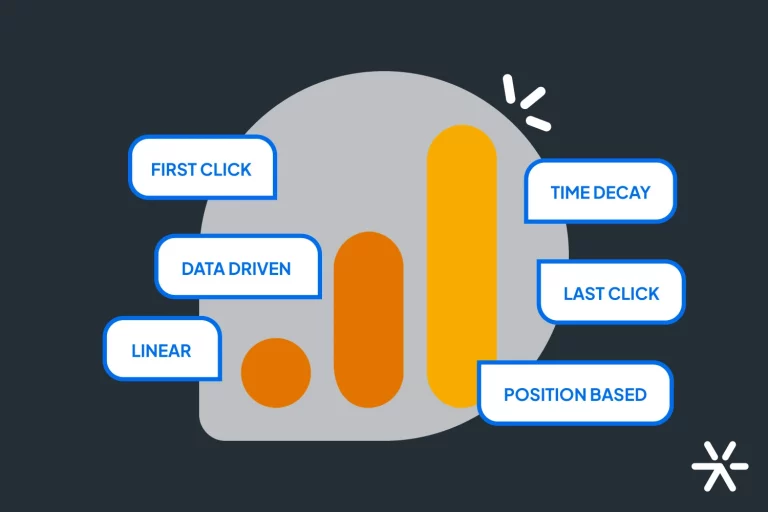Digital Marketing Team: How to Structure It from Scratch
Right from the start, most companies, whether they are advertising agencies or not, are concerned with understanding how to create a digital marketing team.
There are always doubts about the size of the team, the essential roles for the business, and which skills to invest in.
With that in mind, Leadster has created a complete article about digital marketing teams, their importance, and how to structure them from scratch!
Let’s get started!
What is Digital Marketing?

Digital marketing is the set of strategies, information, and actions aimed at promoting products, services, and brands in digital media.
Digital marketing includes techniques such as:
- Search Engine Optimization (SEO);
- Inbound Marketing;
- Content Marketing;
- Paid Media.
It’s important to note that 5 billion people worldwide already use the internet—and this number is growing—which means the focus moving forward will be on digital marketing.
Why is the Marketing Team Important?
The marketing team is responsible for planning and implementing the company’s digital marketing strategies.
With these strategies, the department can attract and engage customers and generate revenue through online channels.
In other words, the marketing team is directly linked to the company’s results.
What Are the Key Areas of a Marketing Team?

Marketing teams vary depending on the company’s culture and needs. However, we can outline the main areas of a marketing team in general. Check them out!
Leadership
As the name suggests, this area coordinates the others and serves as a direct contact with other company teams. Leadership roles may include managers, coordinators, directors, and even a Chief Marketing Officer (CMO).
SEO
The SEO team is more technical, focusing on website and blog strategies to achieve strong search engine rankings.
Content
Content planning, creation, and tracking are among the most impactful areas in a company. This team is responsible for website content, blog posts, social media, email marketing, and collaborating with the SEO team.
Design
The design team is responsible for shaping the company’s branding alongside leadership, as well as being at the core of the creative department. Additionally, they handle the technical aspects of design.
Operations
The operations team implements marketing automation tools and manages workflow execution in line with the plan. This area ensures organization and efficiency within the marketing team.

How to Build a Digital Marketing Team?
Before assembling your digital marketing team, you need to understand your company’s needs. In other words, structure your team based on your business’s size and workload.
That’s why we’ve outlined three types of digital marketing teams you can build. Check them out!
Small Digital Marketing Teams
In small marketing teams, employees often take on multiple roles, as we’ll see below. Managers should be aware that this can lead to overload and lower-quality outputs, so it’s important to minimize these risks.
Marketing Analyst
The marketing analyst, who may also act as a manager in this setup, is responsible for:
- Brand strategy;
- Campaign planning;
- Marketing strategy;
- Measuring and analyzing results.
Digital Marketing Assistant
If the analyst’s workload is too high, a marketing assistant can be hired to handle tasks such as:
- Publishing content;
- Monitoring social media;
- Tracking performance data.
Designer
The designer creates the visual identity and graphics for company publications. This service can be outsourced, but having an in-house designer ensures alignment during creative production.
Copywriter
The copywriter is responsible for writing blog articles, social media captions, ad copy, email marketing campaigns, etc. This role is essential for a strong marketing team.
Medium-Sized Digital Marketing Teams
Medium-sized teams handle a larger workload and require more employees.
To determine the right time to expand, evaluate the increasing workload and the department’s impact on business growth.
Marketing Manager or CMO
Oversees the entire marketing team, sets strategies, leads execution, and monitors project progress.
👉 Read also: How to Distribute Leads Within a Sales Team?
Traffic Manager
The traffic manager studies keywords and audiences to plan and implement paid ad campaigns.
Beyond planning, they focus on ad creation, optimization, and budget allocation across different channels.
Marketing Analyst & Assistant
Their responsibilities remain similar to those in small teams, but with greater specialization due to the increased workload.
- Marketing Analyst – Leads strategies, campaigns, and performance measurement.
- Marketing Assistant – Handles customer interactions, publishing, and tracking performance, assisting the analyst.
Copywriter & Designer
Both roles maintain their core functions but may require additional hires as the team scales.
Social Media Analyst
A new addition in medium-sized teams, this role analyzes social media performance and ensures better engagement strategies.
Web Developer
Responsible for building landing pages and maintaining the company’s website, optimizing digital campaign results.
Full Digital Marketing Teams
A full marketing team is recommended for large companies or mid-sized businesses with a strong digital presence.
Front-End & Back-End Developers
Developers ensure the technical functionality of campaigns and online pages, troubleshooting any issues.
SEO Analyst
Manages SEO strategies and performance, ensuring strong rankings in search engines.
Marketing Assistants & Analysts
The number of assistants and analysts increases in a full team, based on the company’s needs.
Average recommendation: 3 assistants & 3 analysts.
Traffic Manager
Oversees paid ad campaigns, optimization, and budget distribution.
Copywriters
Larger companies should have at least three copywriters to handle all text-based content.
Designers
Likewise, three or more designers are recommended, with the possibility of a Creative Director to manage the team.
UX Analyst
Evaluates user experience and seeks ways to improve websites, campaigns, and content.
CRO Analyst
Optimizes conversion rates, ensuring that visitors become leads rather than just generating traffic.
Social Media Analyst
As in medium-sized teams, this professional tracks social media engagement and performance.
Head of Marketing
Supervises the team and is responsible for:
- Creating marketing strategies;
- Managing department budgets;
- Defining, monitoring, and reporting on goals.
Copywriter (Conversion-Focused)
Unlike general copywriters, this role specializes in persuasive writing for ads and sales-driven content.
We’ve reached the end of our complete article on how to structure a digital marketing team!
If you want more strategic insights like this, check out our articles in the Strategy category—you’ll definitely learn a lot! 🚀







